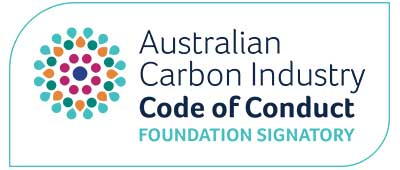Is the Carbon Market another Exclusive Colonial Structure?
By Sean Appoo
Australia’s carbon industry has been going for over 30 years since the early 1990s, administered mainly through the Clean Energy Regulator (CER). Approximately 125,192,296 tons of carbon have either been drawn out of the atmosphere and put back into the ground or have been prevented from being released into the atmosphere. Along with these millions of tonnes of carbon, and Australian Carbon Credit Units (ACCUs) issued by the CER, has come millions of dollars for the owners of these projects.
Currently there are 1,657 projects registered nationally with the Clean Energy Regulator. It is unknown exactly how many of these projects are Indigenous owned and managed because the CER doesn’t keep this information. Anecdotally, the number is around 40 Indigenous Projects. A quick calculation shows that only 2.5% of CER registered projects are Indigenous owned and managed.
How can this be if Indigenous People have registered interests covering 54% (arguably 100%) of Australia’s landmass, around 87,000,000 hectares, without considering the seas and potential blue carbon projects at this point. Another quick calculation shows a possible scenario where Indigenous carbon projects could be sequestering more than 87,000,000 tonnes of carbon each year at a conservative 1 tonne of carbon/hectares/year.
This scenario could result in $5.2B/year going into Indigenous organisations and Communities!! Yet another calculation multiplying that staggering amount by the social impact multiplier of $4.41 via Supply Nation’s The Sleeping Giant Report and that number grows to a nation changing $22.93B in social impact.
Talk about Closing the Gap!
The Aboriginal Carbon Foundation CEO, Rowan Foley, had an interesting experience recently during a method development meeting. One Indigenous voice amongst a sea of non-Indigenous voices was easy to discount during the conversation about the role that cultural fire practice could have in protecting the carbon already sequestered in forests. This despite the evidence that cultural fire practice has reduced the incidence of wildfires in Cape York by 50% in the 10yrs that the Savannah Fire Methodology has been in operation.
So if Indigenous voices coming from a position backed by evidence can be so easy to sidelined, what does this say about other methods where we have more than likely had zero opportunity for input into their development. This situation immediately reminded me of another system that was developed without the inclusion or input from large sub-sections of a community. The implementation of artificial intelligence systems in the US have been postponed due to the discrepancy in accuracy in facial recognition technology and how it is strikingly accurate for middle-aged white men and at its worst for black women aged 18-35.
Systems tend to work quite well for the people who design them.
The Savannah Fire Methodology is based on Indigenous Fire Practice, so it is only natural that Indigenous Projects have prospered under this method. It is a relatively low infrastructure method to implement and can be issued with ACCUs much quicker than many other methods, so the return on investment is repaid in a short timeframe.
Other methods like human induced regeneration (HIR) require significant investment to build fences and remove feral animals to stop them from eating the plants and small trees that you had to buy and plant. All that investment won’t pay any dividends until your trees and plants have grown sufficiently large enough for you to cover the verification costs, at least $30,000, and be issued enough ACCUs to cover some of the costs.
Aboriginal Land Managers are land rich and cash poor. So this method that should work amazingly in this context under the control and guidance of the custodians of these lands, the Traditional Owners (TOs), is agonisingly out of reach due to a lack of resources. In one of the first paragraphs of methodology page on the CER website it says:
the proposed project area is greater than 15 hectares and covers more than one third of the farm on which it is located
Farm.
There it is in black and white (pardon the pun). I’m not attacking farmers. I don’t begrudge them earning money from looking after the landscapes and ecosystems under their control. This is important work, but it does highlight who the system was designed for, and there are no prizes for guessing that it is not Aboriginal People. Probably because Aboriginal People don’t have our own National Lobby Group to provide input into policy development.
The other structure that needs recalibrating is Climate Active.
Climate Active certification reflects the role that government, business and community have to play in working together to address climate change.
This certification system is an annual process where government, business and community must demonstrate that they have offset their previous year’s carbon footprint each year. This system should change to encourage and recognise the long-term investment in projects needed to meet our national 43% emissions reduction target by 2030 and come up with formulas to identify the time period that projects will sequester the tonnage of carbon to match the investors multi-year carbon footprint.
Another innovation needed is a $10B investment fund to directly resource Aboriginal Land Managers to implement a range of nature-reparations (carbon and biodiversity) projects across the country and seas. Investment funds are not the innovation, the government recently passed a bill for a $10bn social housing fund. The innovation is that this fund should be under the direct control of Aboriginal People. We have the skills, the capabilities, the motivation, the integrity, and the knowledge to design and build a system for our lands, seas, and people, that might just result in benefit for us all.























